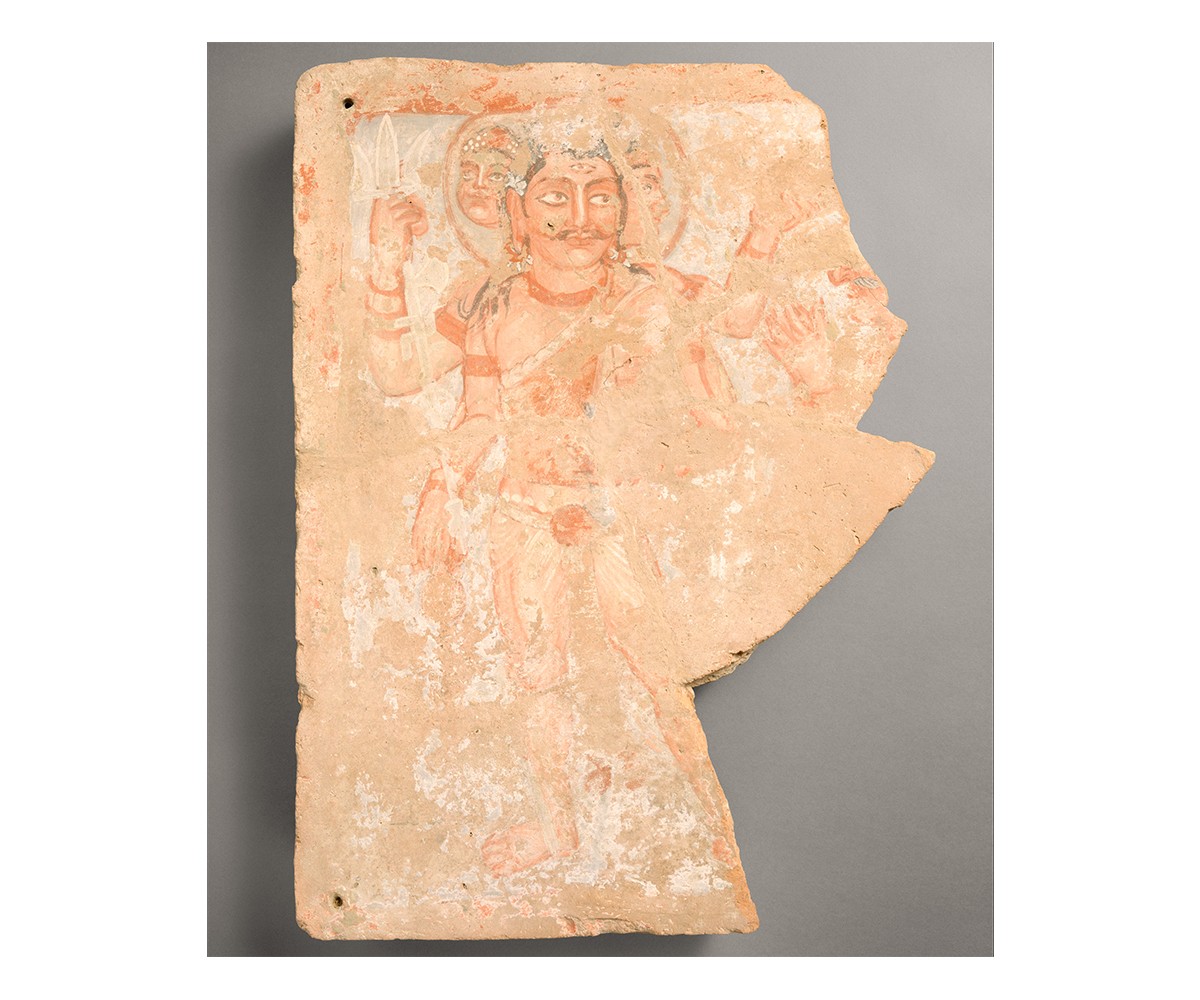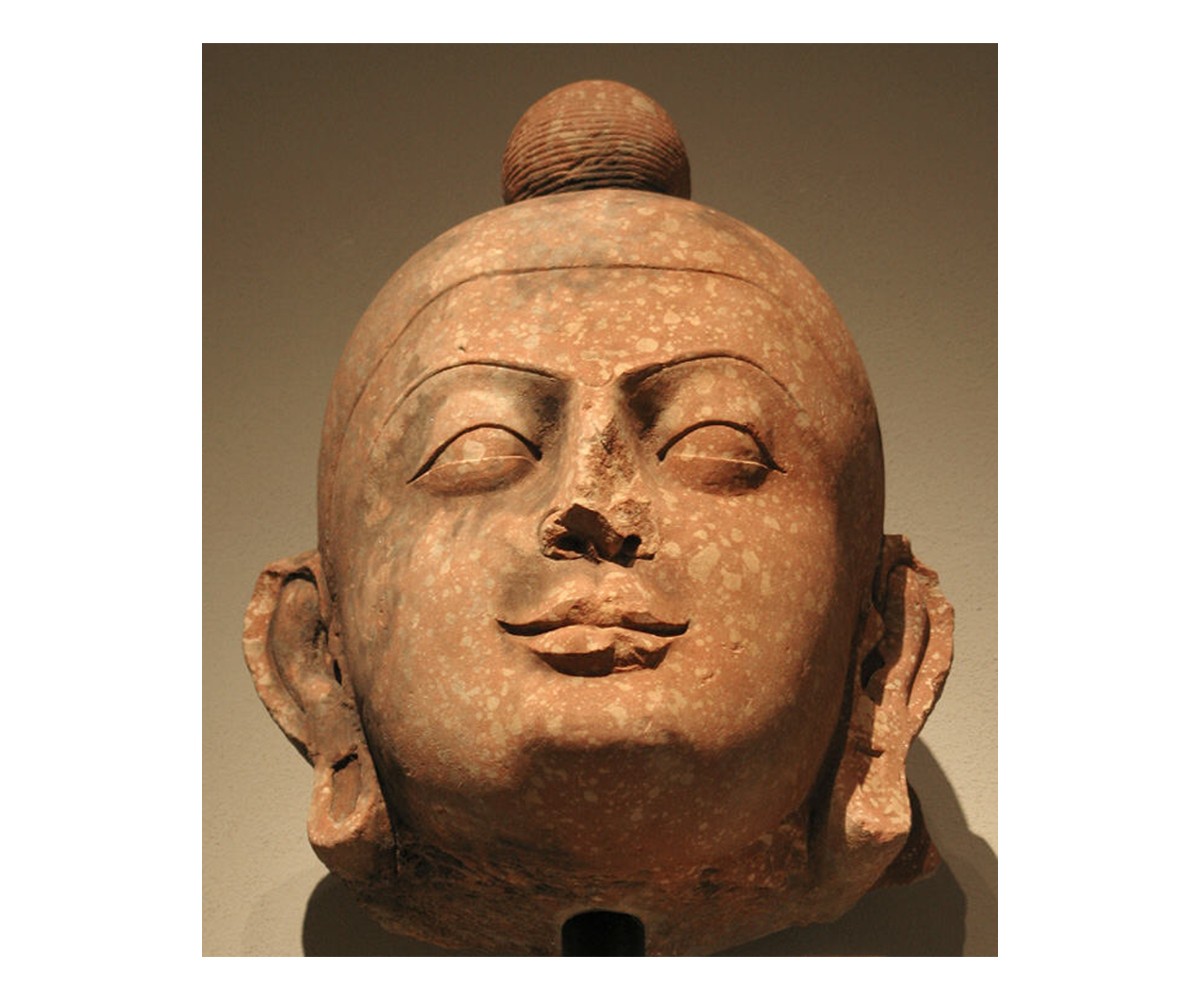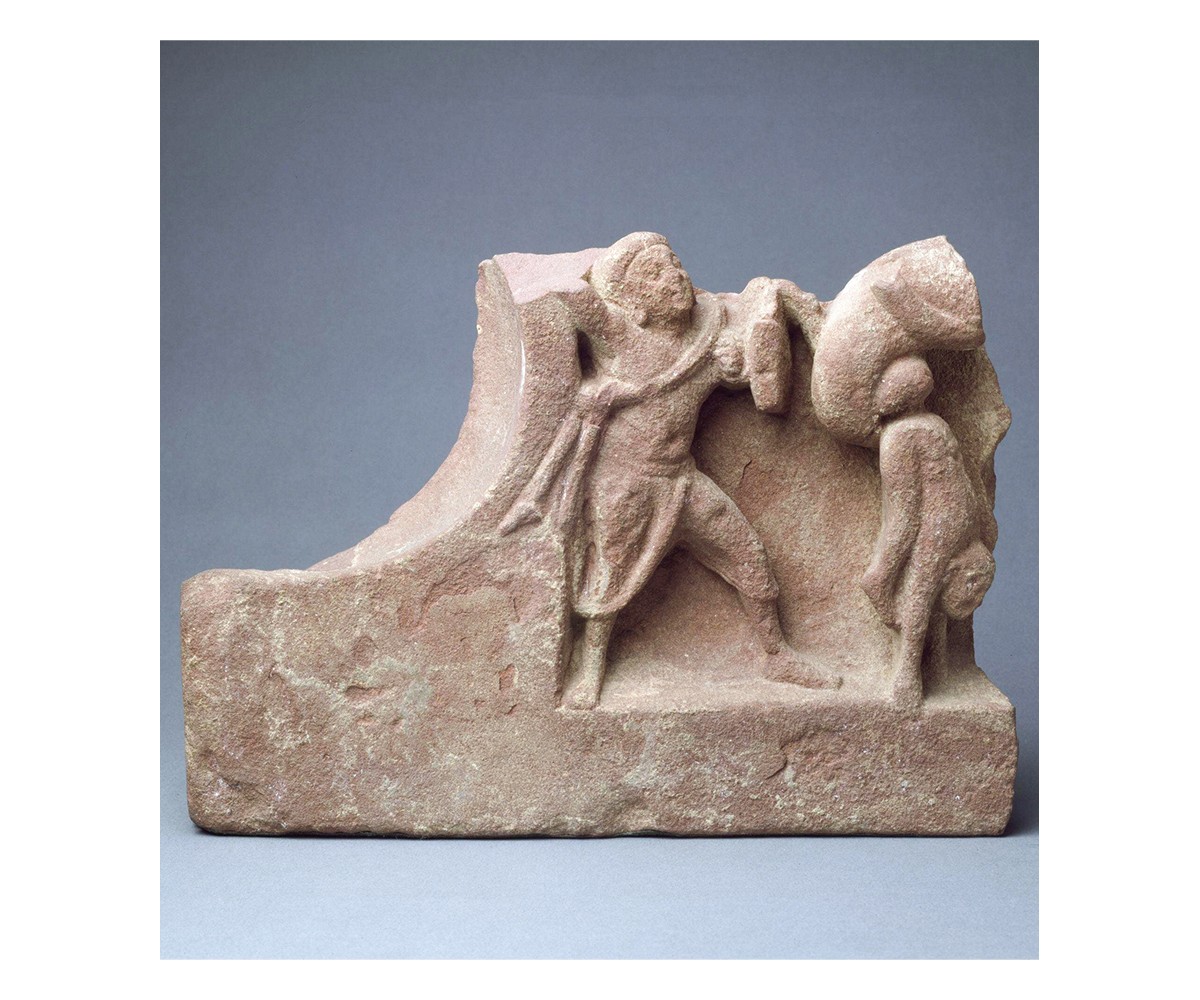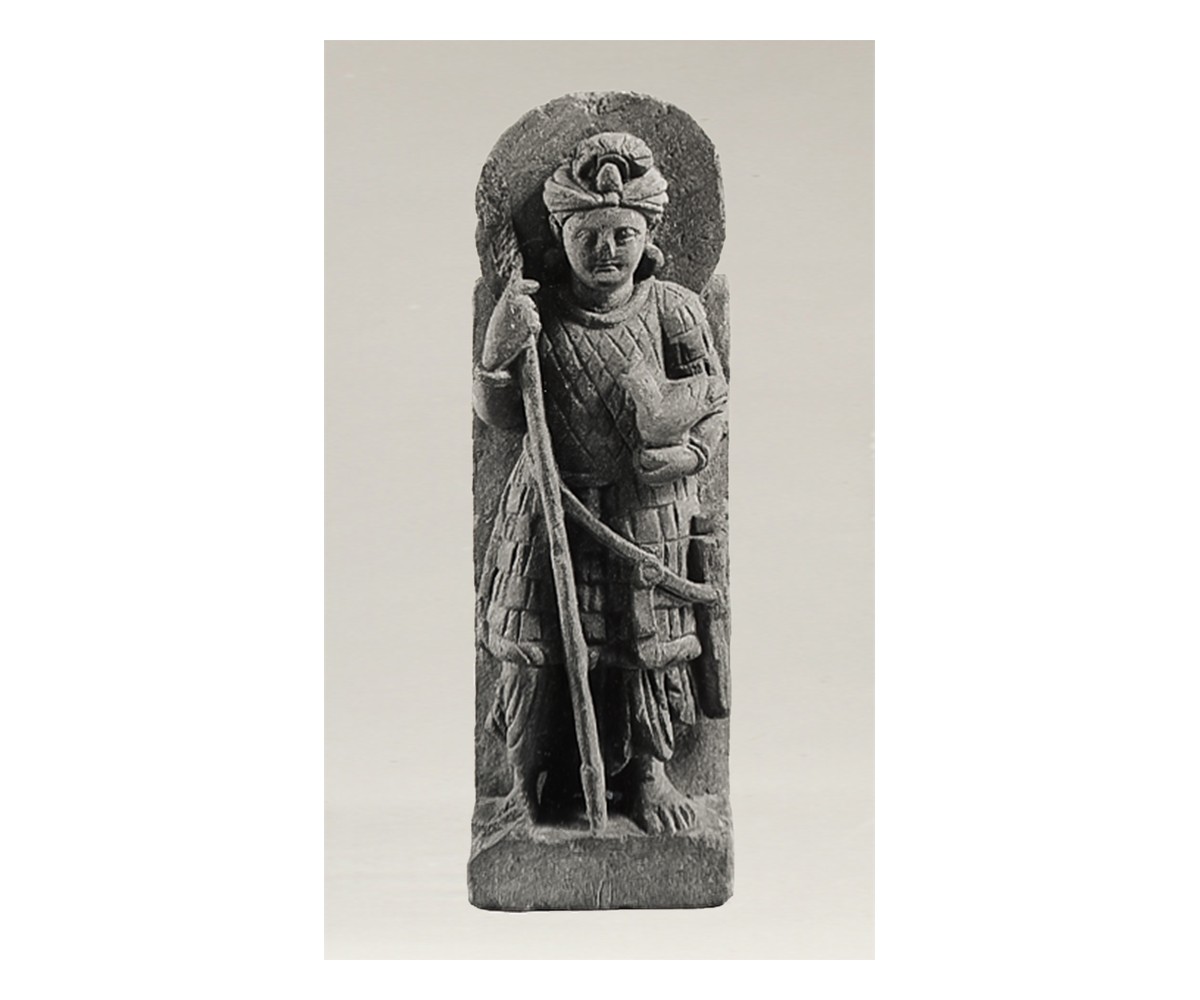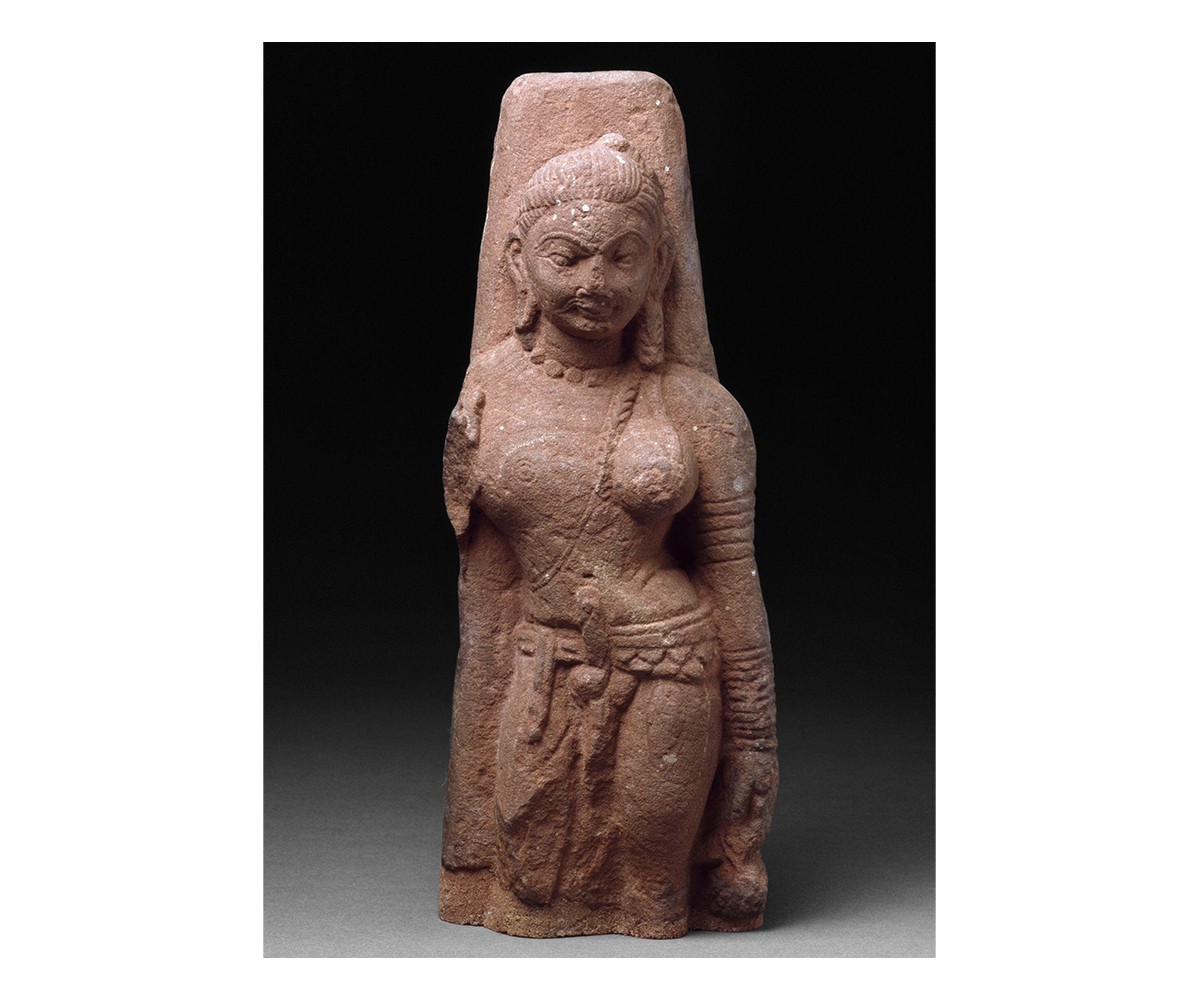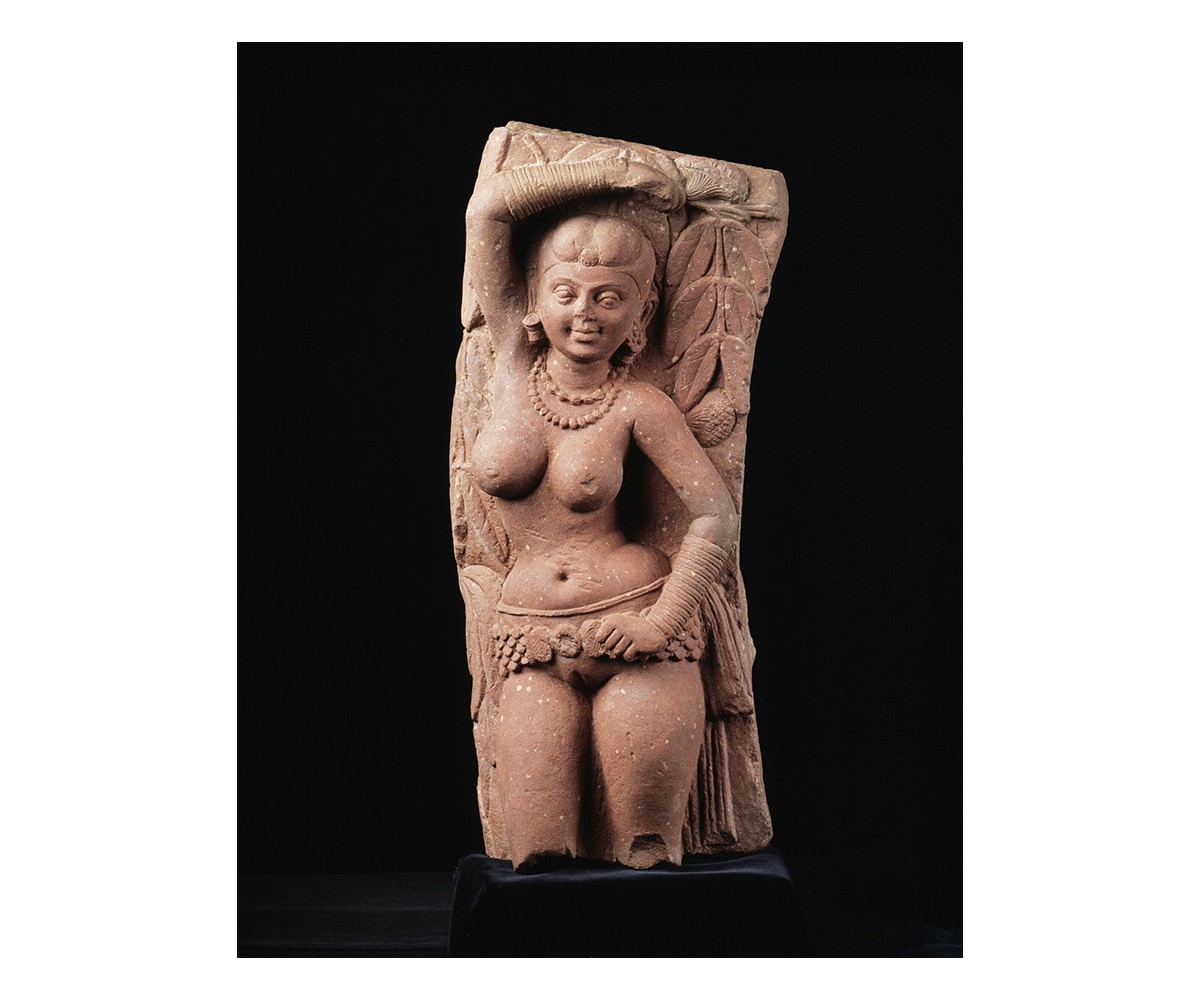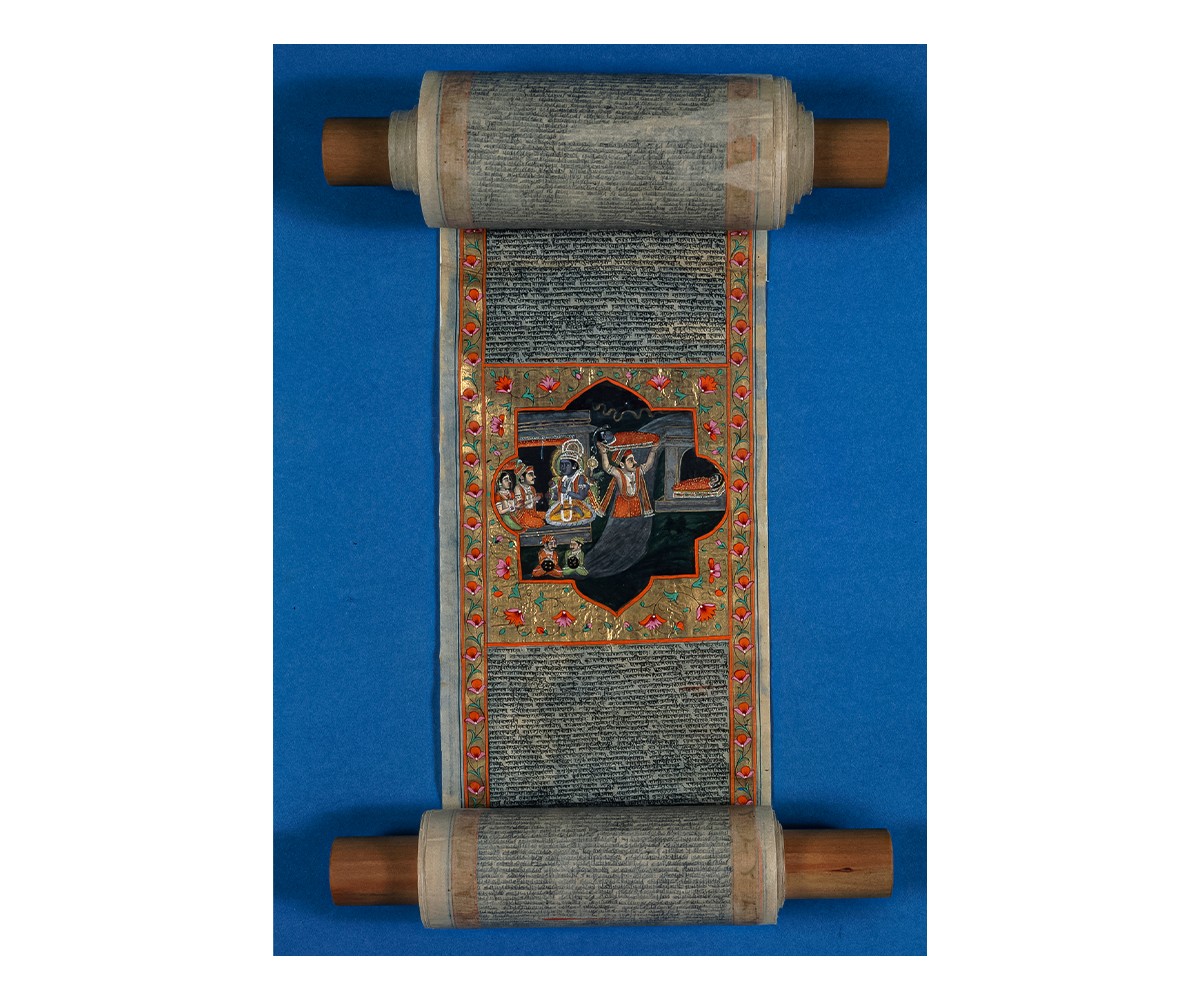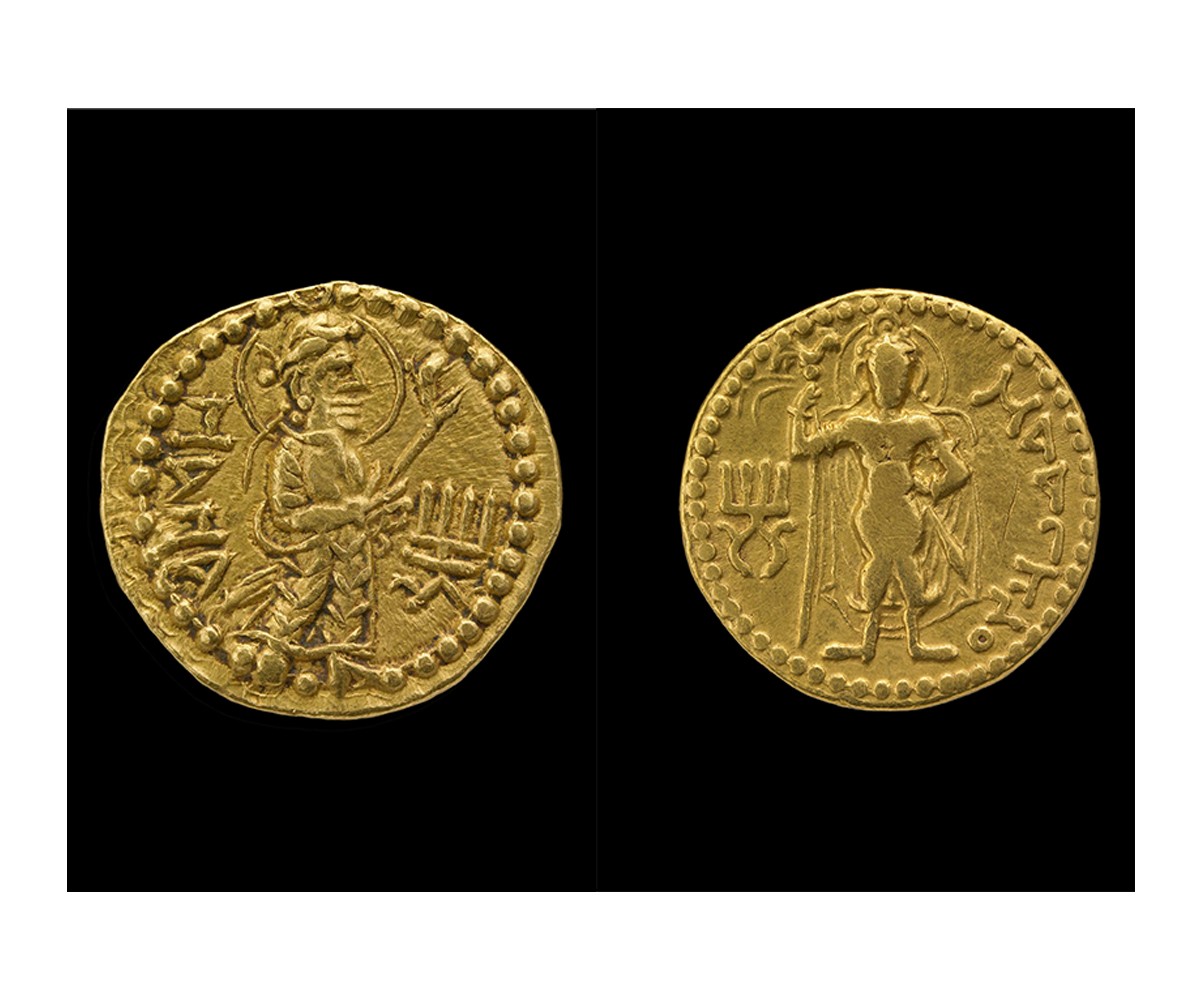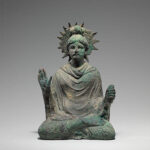The Mathura Style and Early Sanskrit Literature
120 CE
The Kushan empire expands through much of present-day Afghanistan, Punjab and the Gangetic Plains. In Mathura, a major Kushan city, new and highly influential sculptural modes emerge, often depicting the Buddha. Sanskrit literature begins to be used in court-commissioned mahakavyas (great or epic poems) such as Ashvaghosha’s Buddhacharita. This is among the earliest known courtly use of the language, a trend that will accelerate and expand in subsequent centuries.
The religious use of the language also grows, with various schools and cults beginning to compose mythological, iconographic and ritual compendia known as the Puranas; these allow for the reinterpretation of older Vedic pantheons to give primacy to supreme deities such as Vishnu and Shiva, both of whom become the premier royal gods of the early medieval period. Influential iconographic forms of deities such as Skanda and Durga also take shape, influenced by Kushan deities such as Mahasena and Nana.
Bibliography
Quintanilla, Sonya Rhie. History of Early Stone Sculpture at Mathura, ca. 150 BCE – 100 CE. Leiden: Brill Publishers, 2007.
Singh, Upinder. A History of Ancient and Early Medieval India: From the Stone Age to the 12th Century. New Delhi: Pearson, 2016.
Thapar, Romila. The Penguin History of Early India: From the Origins to AD 1300. London: Penguin Books, 2003.
Feedback 
This entry appears in
Art in South Asia
Visit Timeline
Associated Timeline Events
First Published: March 11, 2024
Last Updated: July 2, 2024



